Benny Lewis's Blog, page 83
December 8, 2015
How Many Languages Can One Person Speak?

Why this omission? The answer lies in the curious story of a Liberian-born language teacher, Zlad Youssef Fazah, and a Chilean TV chat show, Viva el lunes.
In 1973, Fazah was living in Brazil, which at the time was under a military dictatorship. Soldiers knocked on his door and demanded that he go with them.
“I felt sick with fear,” Fazah later recalled. “I thought I was being arrested as a spy.”
Fazah was interrogated for being a spy, even though he was just a humble language teacher. The soldiers had picked him up on the orders of the CIA. His interrogators wanted to know why a young man from the Middle East spoke Chinese and Russian. They asked: Who was he working for? Was he a Russian spy?
“I wasn't working for anyone, not in their sense,” Fazah says. “I was just really good at languages.”
“My language skills have not always brought good things,” he adds.
Until 1998, Fazah held the Guinness World Record for speaking 58 languages. That was until he appeared on Viva el lunes.
On the night of the show, the host surprises Fazah with a language test, with audience members (diplomats brought in from different embassies) asking him questions in various languages. When it comes to the questions in Finnish, Russian and Mandarin, Fazah looks visibly anxious. He asks that the questions be repeated more slowly. Then he asks that they be repeated again. With some questions, he stutters an answer. With others, he fails to answer at all. By the end of the show, the audience start to boo him.
[caption id="attachment_17388" align="alignnone" width="640"]
 Zlad Youssef Fazah on the Chilean TV chat show, Viva el lunes.[/caption]
Zlad Youssef Fazah on the Chilean TV chat show, Viva el lunes.[/caption]Thanks to YouTube, you can watch the full catastrophe unfold.
Nowadays, the Guinness Book of World Records no longer awards a place to the person who can speak the most languages. This is likely due to general confusion on the definition of fluency - and how difficult it is to test the claims of polyglots.
A few years ago, polyglot blogger Ryan Boothe gave Fazah the right of reply to his appearance on Viva el lunes. After a telephone interview with Fazah, Boothe wrote:
Before [Fazah] went on that Chilean program the producers had told him that he would simply be interviewed and not tested. He went to the studio finding that they had brought diplomats from many different countries that were going to test him in their native languages. A lack of preparation, nerves and jetlag got the better of Ziad and he responded incorrectly to a few of their questions. To this day he wishes he would have walked off the set instead of going on live TV..
Further:
The video on YouTube was edited to only show the incorrect responses and not the many correct responses that [Fazah] gave.
The controversy surrounding Fazah begs the question: How many languages is it possible for one person to speak?
Who Holds the Record For the Most Languages Spoken?
There are plenty of examples of people through history who have claimed to have held command over a staggering amount of languages.
[caption id="attachment_17392" align="aligncenter" width="214"]
 Emil Krebs made it his life mission to learn every language.[/caption]
Emil Krebs made it his life mission to learn every language.[/caption]German diplomat Emil Krebs (1867-1930) made it his life’s quest to learn every language in the world. He reportedly spoke 65 languages and had a special and rather unique interest in translating the phrase “kiss my ass”, which he managed to do in 40 languages. His brain was examined by German neuroscientists in 2002, who reported it was different to other brains.
[caption id="attachment_17390" align="aligncenter" width="229"]
 Sir John Bowring, who claimed to speak over 100 languages.[/caption]
Sir John Bowring, who claimed to speak over 100 languages.[/caption]Sir John Bowring (1792-1872), the 4th Governor of Hong Kong was allegedly able to speak in over 100 languages. However, there exists no determinable proof of this claim, apart from reports from those who knew him that he held a lifelong passion for the study of language.
[caption id="attachment_17393" align="aligncenter" width="300"]
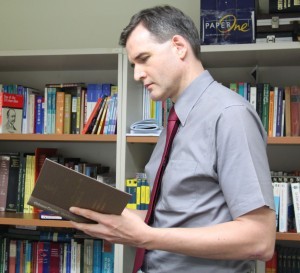 The world's greatest living polyglot, Alexander Arguelles.[/caption]
The world's greatest living polyglot, Alexander Arguelles.[/caption]The most impressive living example of a hyperpolyglot is probably Alexander Arguelles, who has studied and to some degree understands around 50 languages. Alexander caught the language bug at university when he began studying German. From then on, he devoted himself to learning as many languages as he could in his lifetime. He notes that the further he goes with his learning, the easier languages come to him. When he first started learning Swedish he was able to hold a complex conversation within three weeks. Yet, he considers this an early stage of learning a language, with much work left to go.
” Climbing the mountain – achieving native fluency – is always going to take years.” - Alexander Arguelles
What Does it Mean to Be Fluent?
At which stage of language learning can we consider a person to be fluent? Is it when they can competently hold a conversation, or not until they can converse in far more complicated topics? Do we need tangible proof for each language these individual’s claim to speak, such as a CEFRL diploma?
I believe the idea of fluency comes down to the individual. For me, it was being able to speak confidently, with few hesitations or mistakes - aiming for about a 90-95% level of “perfection”, and for use specifically in common social situations. This “upper intermediate” level of B2 on the CEFR scale, is what most people think of when they imagine using their language - it's effectively social equivalency to your native language, with allowance for an accent and a few minor slips.
What you can do at the C levels is more for professional situations, and while I’ve achieved this myself in some languages enough to work as an engineer or translator, this is actually overkill for the vast majority of people, who want to live their normal (non-technical) lives through the language. The way we use the language the majority of our time interacting with people is fluency to me, and anything beyond that is “mastery”.
While having a C2 diploma in Spanish is great, I honestly haven't used mastery level Spanish much since I stopped working in engineering and translation, but I continue to use fluent level Spanish regularly in social settings. The same goes for my C2 French, and my C1 German.
The way I’ve worked towards fluency has involved putting down the textbooks and learning to speak from day one until I reach upper-beginner (A2) to lower-intermediate (B1), and then to hit the books and get more formal lessons, to “tidy up” what I have until I have a more solid command of the language. It’s a method I’ve used for every single language I’ve learned and the one I credit the most to my success.
How many languages?
Using this approach I can personally speak in seven languages at a fluent level (as I've described above) or higher. I can also get by pretty well in a bunch more, but when asked "How many languages do you speak?" (and I get asked that a lot!!), I never give a simple number, since it's not a simple question :)
My answer is always that it depends on how you define "speak", and then I give a quick definition of my understanding of fluency and say that based on that I speak 7 languages, but I can get by in a bunch more.
Zlad's unfortunate experience is always in the back of my mind whenever I'm being interviewed on TV or radio, which is why I try to watch my words whenever possible. I would almost always insist on being interviewed in just one language (and am happy to do that in non-English languages, as I was in Spanish and Irish and a few other languages on the radio), since that is the only useful language for anyone listening.
It's not really a question that does well either way on media.
First, it's too easy to exaggerate your skills in a short spot and make people think you can do what you truly can't. I've never felt embarrassed or booed off stage, but I did actually feel genuinely terrible after one interview when the direction it went in was such that I said a random phrase in Quechua that I still remembered. I realized too late that we had gone in a direction such that the conclusion of the interview was "you're a very impressive man, Benny Lewis!"
I hated it - I had wanted to make an impression on inspiring some listeners to dive into their own language projects, that it's easier than they think, and that they aren't too old, and instead I had just been a easily forgotten little spot between channel hopping. This to me is genuinely the worst interview I've ever done and to this day I still feel guilty about it.
CEFRL certificates are probably the best way to "prove" that you speak a language, but it doesn't make for good TV or radio to follow along with someone in silence (apart from the listening comprehension and oral exam) for 3+ hours, then wait 2 months until a certificate comes in the mail :) I can't see that ever working on prime time TV...
But then it's also bad the other way, and someone who genuinely can speak multiple languages could get totally embarrassed, as we've seen.
How would I do in a live test?
The worst that's happened to me so far is that I've been put on the spot to translate random words on live radio. I actually have Zlad to thank for his "worst case scenario" experience being in the back of my mind, and to downplay my skills whenever possible and have a way more useful goal on media. A TV show may invite me to entertain their audience and boost their ratings, but I don't care about that. For me it's a platform to inspire new learners, not to impress people flicking between stations, who'll forget it in 5 minutes.
Luckily, thanks to plenty of experience now, I am very confident in interviews and can change the direction it's going in, even though I'm the interviewee. When I got asked once to translate "caterpillar" into all my languages (seriously?), I said quite honestly that I'm here to inspire beginners to consider learning a language themselves, not to try to impress people. Rather than play along, I told them honestly that I would fail that test miserably, since I'm not a walking dictionary and blurting out random words in completely different languages is not a skill I possess.
To avoid any awkwardness, I quickly changed direction and gave a tip for how anyone listening could learn foreign words like caterpillar, citing oruga as an example in Spanish, and gave a quick mnemonic suggestion. From here I could segway into my best encouragement for people who may think they have a bad memory, or are too old.
Inspiring learners was why I was on the air after all, and with usually just 3 minutes to do it, I stop silly questions in their tracks and turn them into opportunities to be useful to anyone listening ;)
However, there are many other individuals who employ the use of other methods with inspiring results, in the language learning world.
Let’s take a look at a collection of polyglots from around the globe – their stories, what inspired them to take up language learning and what you can learn from them.
Richard Simcott: The Multilingual Ambassador with a Language Addiction

"Language carries the culture of the country that uses it and when you internalise it, it becomes a part of you too.” - Richard Simcott
Richard Simcott’s fascination with languages started as a child. At school he began studying languages and there started an addiction that he knows will continue on for the rest of his life.
Richard has studied more than 40 languages over the years and can speak in over 16 (English, French, German, Spanish, Italian, Portuguese, Polish, Latvian, Russian, Macedonian, Norwegian, Swedish, Chinese and Ladino, to name a few!). His love of learning languages has led him to be named the ‘Multilingual Ambassador’ for the Goethe Institut, as well as founding the Polyglot Conference. He is also raising his daughter to be multilingual – regularly speaking to her in English, French, German and Spanish.
Richard makes a point to study languages every day, anywhere from a single hour, up to eight. He also likes to visit a country with native speakers of whichever language he may be learning at the time, as he believes immersion is a key factor in making things stick.
Richard notes that his greatest struggle with language learning is time. Along with juggling his day to day responsibilities of parenthood, work and university study, he feels there never will be enough time to learn all he wants in life, but he will continue on with his language learning until his body can no longer take it.
Susanna Zaraysky: “Language is Like Music”

"For me, the key to learning is being able to listen – paying attention to patterns, the fluctuations of speech and the emphasis in the words. I listen to foreign languages as though they are songs – and that's how I remember words and the melody of speech.” - Susanna Zaraysky
Susanna Zaraysky began learning languages from an early age. Her family left the Soviet Union when she was three, immigrating to the United States, where she was forced to learn English quickly. She went on to study nine other languages (French, Spanish, Italian, Portuguese, Serbo-Croatian, Ladino, Hebrew, Arabic and Hungarian) and has travelled to over 50 countries.
She notes that while vocabulary and grammar are essential factors to language learning, it is important to supplement your studies with accompanying resources that make learning fun. She believes using TV, radio, music and film as additions to your language lessons reinforces the basic cornerstones of what you are already having to learn.
Susanna in particular cites music as being a key part of her language learning, saying it’s the perfect way to improve your accent, pronunciation, timing and grammar. Above all, she believes that the most important part of learning language is how it makes you feel. She states that she has a different way of expressing herself, depending on which of her languages she is speaking, a side effect of being a polyglot that enriches her life.
Alex Rawlings: Britain’s Most Multilingual Student

“Languages are an asset for whatever you want to do in life. They open your mind to worlds you never knew were there. They introduce you to amazing people that you might otherwise have just walked by." – Alex Rawlings
In 2012, a competition was held across the UK to discover Britain’s most multilingual student. Alex Rawlings, age 20, tested for fluency in 11 different languages (English, Greek, German, Danish, Russian, Hebrew, Catalan, Italian, French, Afrikaans and Spanish), before taking out the coveted title.
Since graduating from Oxford, he has been leading the nomadic lifestyle (much like myself), travelling and living across Europe as he adds more languages to his arsenal, such as Hungarian and Serbian. He now teaches languages and both attends and runs polyglot events.
Alex has succeeded in learning languages largely because he discovered a way that worked for him. He notes that most people who study languages in an academic setting don’t really learn them – they are taught them. Once you’ve finished the subject pass or fail, you’ll probably forget whatever it was you’ve learned for the rest of your life.
To gain any kind of success in learning languages, Alex had to find a way that worked for him. Immersion has been a key factor in his success. His first language was Greek, which he began learning due to his heritage – growing up with a Greek mother. As a keen traveller, he’s happily travelled to and spent time in countries, which have languages of interest to him.
Now that he has figured out a way of language learning that suits him, he is able to apply this method to go on to become fluent in others, as he proved when he moved to Budapest to learn Hungarian.
I onced asked Alex how he manages to compartmentalise his languages, to not mix them up when speaking and keep them fresh in his memory. He said that as he is a visual person, he pictures his languages as having something to do with weather – Russian in his head is cold and Spanish makes him think of the beach. Focusing on these images helps him stick to whichever language he is speaking at the time.
Luca Lampariello: Languages Cannot Be Taught – They Can Only Be Learned

"I’m constantly exploring in the languages I’ve learned through the written word, and this exploration helps me to connect the dots.” - Lucas Lampariello
Italy is a country that is infamous for being monolingual – yet Luca Lampariello has managed to reach a high level in ten languages (Italian, English, French, German, Spanish, Swedish, Russian, Dutch, Portuguese and Mandarin Chinese), studying many of them while living in his home country.
His breakthrough in language learning came at the age of 10, when his mother hired an American tutor who guided him through the English language, rather than just teaching it. He found that he had the greatest success through reading and being OK with making mistakes – taking up the ultimate challenge of completing Steven King’s novel “It” in English, despite his learning level at the time (and age!).
He found that although reading helped build his vocabulary, it went a step further in helping his comprehension by putting words it into context.
The One Characteristic All Polyglots Share
From all the polyglots mentioned above, one thing becomes abundantly clear. Each individual, through trial and error, found a method of language learning that worked for them. They then continued to apply this method again and again as they went on to learn multiple languages.
If you want to be successful in language learning, you will need to do the same.
Experiment. Don’t be scared to try new approaches, if you find others don’t work as well for you. You’ll soon discover the way that works best. And from there… who knows how many languages you could learn? The sky’s the limit.
Let me know your thoughts on all this in the comments, and share who you have come across not mentioned above who speaks many languages!
The post How Many Languages Can One Person Speak? appeared first on Fluent in 3 months - Language Hacking and Travel Tips.





December 4, 2015
10 French Reading Resources and Exercises (Beginner to Intermediate)

If you do, that’s because written French is very different to spoken French.
In particular, French has many silent letters that can go at the end of words. As a result, there are multiple ways to write a single French sound. For example, cent, s’en, sang, and sans all sound exactly the same. The same is true for tout, tous and toux.
Because of this, it can be difficult to reconcile what you read with what you hear in French. You’ll need to put a bit more effort into your reading comprehension in French than you would with some other languages that have a more regular written form, such as Spanish.
I’ve searched the web for a variety of French reading resources and exercises, most for beginners but some for more advanced learners, to help you improve your French reading ability.
Let’s dig in...
Absolute Beginner: Apprendre à Lire
This site is incredibly useful for absolute beginners in French. It’s meant to teach French children how to read, but there’s no reason why you can’t use it too! It covers virtually every French sound, including those not found in English, and teaches you not only how to read them and use them in real words, but also how to pronounce them.
This is handy for beginners, because although the French alphabet is identical to the English alphabet, many of the letters sound very different. There are several exercises for each French letter, so you can choose the ones that you find most helpful.
The site is all in French, including the instructions for each exercise, but the instructions are relatively simple. If you struggle with them, plug them into Google Translate to get the gist with an OK English translation.
Beginner to Intermediate: French Readings - languageguide.org
This is one of the better sources I’ve found for beginner to intermediate French reading comprehension. Languageguide.org is a superb website that provides a simple, condensed way to learn the basics of vocabulary and grammar for many languages.
The French section features several reading samples, each accompanied by a spoken recording. The more difficult words are highlighted, letting you hover your mouse over them to see the English translation.
You can also see the English translation of entire sentences by hovering your mouse over the punctuation mark at the end of each sentence. If you want pure reading practice without the audio, just click the pause button any time to pause the recording and focus on reading.
Children’s Stories: International Children’s Library
I absolutely love the presentation of this free online library filled with children’s books in dozens of languages, including 60 in French! Some of the stories are well-known to the English-speaking world, so if your French is limited, I recommend you start with the stories you’re familiar with, so you’ll have some help with vocabulary due to your prior knowledge. Many of them also have an English translation you can use if you need some help.
Short Fiction: The Works of Guy de Maupassant
Guy de Maupassant was a famous French writer who wrote more than 300 works of fiction during the late 19th century, and is often considered one of the fathers of the modern short story. And for good reason! Each story is only about 3000 words long, but is remarkably captivating. I haven’t yet read one that I didn’t like.
If you want to expand your knowledge of classic French literature, this is one of the best places to start. The website contains nearly all of de Maupassant’s short stories, most of which come with an English translation.
This is definitely one of the more advanced resources in this list, but don’t let that scare you. Don’t be afraid to challenge yourself! You’ll learn more quickly if you don’t just stick to books where you know all of the words. The English translations are always there to help you if you get stuck.
Free Ebooks: Ebooks Libres & Gratuits
This is an absolute goldmine of free e-books, available in almost every file format you could hope for, from Kindle, Kobo and Sony e-reader formats, to PDF and HTML for reading on your computer. There are hundreds upon hundreds of free, complete books to choose from.
If you’re a beginner, go to the search box at the top of the page, and select “Jeunesse” from the dropdown menu next to “Genre”. This will show you all of the books for children and young adults. It has dozens of masterpieces such as Le Petit Prince and Alice au Pays des Merveilles. Some even have full-colour illustrations.
Graphic Novels: Amilova
Comic books and graphic novels aren’t just for kids and geeks anymore. You wouldn’t believe the variety of genres that are available today, for every taste imaginable: horror, romance, drama, parody…you name it! Amilova is a huge online community for graphic novel enthusiasts, containing almost a thousand high-quality stories in their entirety, available to read free online.
The big advantage of using graphic novels to help improve your French is that many of them are strongly dialogue-orientated. This means you get to read a lot of everyday spoken vocabulary that people use in real life. Instead of reading the purely classical literary form, you’re improving your spoken colloquial French skills and reading an engaging story at the same time.
Be sure to click the flag in the upper right corner to change the language to French. That way you’ll only see the stories available in French.
Classic Fairy Tales: The French Experiment - French Children’s Stories
Four of the most popular children’s fairy tales - The Three Little Pigs, Goldilocks and the Three Bears, Little Red Riding Hood and The Ugly Duckling - are translated into French on this website and accompanied by an optional audio recording. Since you’re probably already familiar with these stories, you’ll pick up the vocabulary more quickly than you would reading a brand new story.
News in Simple French: RFI - Journal en Français Facile
If you don’t have time to read entire books in French, then spend just a few minutes a day catching up on the news in French instead. Radio France International (RFI), a French worldwide news service, offers a daily world news digest in simplified written French for students of the language to practice their reading skills. The webpage is updated every evening with that day’s biggest news stories.
If you’re a beginner or intermediate learner, I recommend you start with this website every morning before you read the world news in your native language. This way, you can try your best to understand the stories in French, and later when you read the headlines in your native language, you can compare what you understood in French and see if you were close to the real story.
Cookbook: Cuisine à la Française
I don’t normally recommend cookbooks to help improve your target language, but I’ll make an exception for French. After all, French cuisine is one of the most popular and influential in the world, having recently been added to UNESCO’s intangible world heritage list due to its global reputation. If you ever visit France, you’ll notice immediately how big a role the cuisine plays in everyday life.
It’s a good idea, then, to read as much as you can about French cuisine while you’re studying the language. That way, you’ll learn practical vocabulary to use when visiting France or eating at French restaurants (or even when just talking about France with native speakers). You’ll also get valuable insight into an essential aspect of French history and culture, and learn to cook a variety of mouthwatering recipes.
The website Cuisine à la Française is the perfect place to start. You can search their database of nearly 2,000 classic recipes alphabetically or by category. Be sure to click on the “Histoire de la Cuisine” tab to learn all about the long and fascinating history of food in France, from 12,000 years ago up to modern day. Also check out “Recettes Anciennes” at the bottom of the page for authentic French recipes from hundreds of years ago.
My only bœuf with French cuisine is the relatively small number of vegetarian meals available in most French restaurants, but that’s why I love cooking at home. Home cooking lets me adapt any recipe to suit my dietary preferences. Give it a try yourself, and improve your French reading comprehension in the process.
Test Yourself: French Reading Comprehension Quizzes
Instead of just reading in French, why not test yourself to see how well you understand what you’re reading? This page on About.com provides you with several excerpts in French that you can read and then do a quiz to check your comprehension.
For each excerpt, first click “Lire” to read the text, then click “Étudier” to see a list of key vocabulary from the excerpt along with the English translations. Finally, click “Passer l’examen” to do the quiz related to the excerpt. It’s useful to open “Passer l’examen” in a separate window so you can see the test questions and the text at the same time. Bonne chance !
Do you have a favourite resource for improving your French reading comprehension? Please share it in the comments.
Bonne lecture !
The post 10 French Reading Resources and Exercises (Beginner to Intermediate) appeared first on Fluent in 3 months - Language Hacking and Travel Tips.





December 1, 2015
Learn to Speak Multiple Languages (Without Burning Out)

Chatting with new friends from another country in a language that’s not your own is a special thrill that few other experiences can match. Even ordering a meal, reading a newspaper or watching a movie in a new language can feel exciting and put a new spin on “ordinary” life.
It’s likely you’ll want to pursue this feeling again and again, over the course of your life.
There are many perks to knowing just one other language, let alone multiple languages.
So, what’s holding you back?
Maybe you don’t have enough time. You believe that you’re just no good at learning languages. Or perhaps you find it too hard to stay motivated.
How can you break through these barriers?
By developing a method of learning languages that works for you - one that you can come back to time and time again.
Before I delve into the methods you can use to put such a practice into place, there’s a question I want you to ask yourself:
Why Do I Want to Learn a Language?
People start learning languages for all kinds of reasons. Maybe you:
Have moved overseas for work or family, and you want to make friends with the locals.
Want to learn a language to give yourself more opportunities in the job market.
Are fascinated by a particular country or culture, and want to get an inside view by learning the native tongue.
What’s your reason for wanting to learn a language?
My language journey began as a young adult, while living in Spain. I was taking part in an International Exchange programme for engineers and architects when I met a Brazilian guy who spoke not only Portuguese and English, but also Spanish and French.
I had been trying (and largely failing) to learn Spanish myself at the time. I was so inspired by my new Brazilian friend that I gave up on my plan of returning to Ireland to complete a Masters degree. Instead, I decided to devote myself to learning languages.
Since that decision, I’ve never looked back.
Language learning quickly became the cornerstone of my life – leading me to start Fluent in 3 Months (Fi3M), write a book and become a professional speaker.
Better yet, over the course of the last decade and then some, I have lived all over the globe and met many different people from all walks of life. Learning their languages has allowed me to connect with them in ways no ordinary traveller could ever achieve. I’ve discovered where to eat the best food, the most desirable (and cheapest) places to live in a city and I’ve been able to get to know people on a far more personal level than I would if I only spoke English.
I couldn’t have predicted any of this at the tender age of 21 and I certainly don’t regret a second of it.
What’s my secret recipe? It’s not really a secret - or at least not for much longer! Here’s the techniques I’ve used to learn multiple languages without burning out.
1. Find Your Big Why for Learning a Language
You’ll achieve the greatest levels of success in if your intentions are pure. Language learning should never be about bragging rights. I always prioritise quality over quantity, which is one of the reasons why I tend to come back to the same languages again and again.
As you start out, I strongly advise you consider your reasons for learning this particular language in the first place. Achieving fluency is not hard but it does require a big time investment.
However, if you’re learning for the right reasons, you’ll be able to come back to that one core reason again and again - even when you feel like quitting (and everyone does at times).
How can you find the reason behind your desire to learn a language?
Put your thinking cap on and grab a pen and a paper. I want you to ask yourself two questions:
Why am I learning this language?
What am I hoping to achieve?
For each question, write down the first three answers that come to mind.
Stick this piece of paper on your wall, your fridge or put it on your bedside table or desk at work. It doesn’t matter where, as long as it’s somewhere that you’ll see it every day.
This is going to be your motivation – that which you’ll come back to, whenever you become distracted or feel yourself slipping. These honest reasons, why you truly wish to become fluent in more than one language, will help spur you on, again and again.
What if you can’t think of something, or your reasons seem trite? If you’ve got a desire to learn languages, I suggest you pursue it even if you can’t pin down a specific reason. Learning languages is a journey of discovery. It may be that you can only discover why you’re taking that journey by walking the path. Trust your desire and that you’ll find your reasons along the way.
2. Keep Your Focus Narrow: One Language at a Time
One of the reasons I’ve had so much success with language hacking is that I only focus on one language at a time. That’s what inspired the title of this site. I’d visit a country and get a three month tourist visa. For that three months, I’d focus completely on learning the local language.
Czech was one of the first languages I began learning out of curiosity and for fun. In fact, I started Fi3M to encourage myself in language learning while living in Prague! I gave myself the summer of 2009 to achieve fluency in Czech. With that as my time frame, I gave the language my all.
I spent the better part of two months learning Czech part time and achieved a pretty good level of fluency before running out of money. I may not have reached fluency, but the intensity and focus for those two months made a world of difference.
I’ve learned some languages with the intention of maintaining fluency in them for the rest of my life. Other missions I’ve undertaken have been situational, for a bit of fun, or just to prove that anyone can learn languages that are considered “difficult”.
Whatever my reason, I concentrate solely on the one language at a time. It’s only when I’ve reached a level I’m satisfied with that I move on.
3. Put Yourself Under Pressure: Set a Deadline
People sometimes fail at learning languages because they don’t give themselves an achievable timeframe in which to reach fluency.
That means avoiding phrases such as: ”One day I’ll be able to speak my target language”. By framing your goal in that way, you’re reducing your incentive to learn.
Instead, give yourself a specific goal with a specific deadline (If you’re just starting out, here’s the goal I recommend you set).
When I first started learning languages, I often only had three months in whichever country I was living in due to visa restrictions. Being an Irish national, I was generally only allowed to spend a maximum of three months on a tourist visa in countries outside of the EU.
As a result, I typically had just three months to immerse myself in the local language. So, I gave myself the goal of reaching fluency in three months. This is a really lofty goal, so I’d only have it if I could potentially work on the language half to full time.
Of course, when you set a timeframe for your learning, it can be more or less than three months. I only had one hour to study Polish before attempting to have a Polish conversation on iTalki. I ended up practising two hours in total, before arriving in Poland and having a chat in Polish with a native speaker!
You don’t have to be living in a country where the language you are learning is spoken to be able to speak it yourself. I dispelled this myth when I learned Egyptian Arabic while living in Brazil.
Up until that point I had only ever learned the languages of countries I had been living in at the time. By learning Arabic in advance of my trip to Egypt, I was able to properly enjoy my time spent living there. Knowing the language meant I could easily explore local sites and immerse myself in the country’s rich and ancient culture. Learning a language before travelling works so well that I employed the same technique when living in Valencia, learning Japanese before a trip to Japan.
4. Surround Yourself with a Likeminded Community
Procrastination is the enemy of language learning.
You really want to speak multiple languages? Then you must entrench the habit of language learning in your everyday life. You’ll need to set up rituals that’ll allow you to integrate language learning into your daily routine.
What’s the secret to a persistent, daily habit? Accountability.
Rally a community around you – either of people who personally want you to succeed, or are working towards a similar goal themselves - and you’ll find that you push yourself, even when your willpower is flagging. Your community will encourage you to stay on task when you’re feeling disheartened or distracted.
One way of keeping yourself accountable is to start a blog and tell everyone you know about it. Write regularly about your language learning – the highs and lows, what’s working and what isn’t. Likewise, you can always find help and guidance within the Fi3M forum.
Another option worth considering is the Add1Challange. Brian Kwong, founded the Add1Challenge after he recognised the merit in being part of community of learners that could support one another in working towards a common language goal. The Add1Challenge gives you 90 days to reach a level where you can have a 15 minute conversation with a native speaker of your target language. It includes a public accountability tracking sheet and community support to help motivate you to reach fluency as quickly as possible.
5. Refresh the Languages You Don’t Want to Forget
After investing months of valuable time in a language project, the last thing you’d want to do is forget how to speak the language you learned entirely.
There are a few languages – such as Tagalog and Catalan that I have largely forgotten since my initial attempt to become fluent in them. For me, longterm fluency in these languages wasn’t an end goal. I wasn’t too bothered by letting these languages fade in my mind.
What about the languages I want to hold onto? I keep them consistently fresh in my mind. You can do this by listening to podcasts, reading books, and looking for native speakers to practice with online.
It’s All Down to You
Learning multiple languages can be done – no matter what your background, work schedule or personal goals may be.
Make sure you have a thriving support network, give yourself an achievable timeframe in which to learn and above all, always make sure that you’re doing what you’re doing for the right reasons.
Have you managed to learn multiple languages? How did you approach your learning? What did and didn’t work for you? I’ll see you in the comments!
The post Learn to Speak Multiple Languages (Without Burning Out) appeared first on Fluent in 3 months - Language Hacking and Travel Tips.





November 30, 2015
Earn from Your Passion: Jobs that Travel Around the World

What if you could spend your whole life travelling?
How can you find jobs that travel the world?
When I check my inbox, I see many questions about language learning, and travel logistics, but one that comes up a lot is the question of how I afford to travel.
You don’t have to travel to learn languages, but if you decide you’d like to devote some time to exploring the world and focus on immersion abroad, you can’t help but be focused on one big question:
How can I afford to travel?
The truth is you don’t have to be rich to travel. You don’t need a rich uncle - or to win the lottery - even if you want to travel for years on end.
So, how can you make money while travelling? What are the best jobs that allow you to travel?
I’ve spent over 13 years travelling the world, and working as I go. That’s why I was thrilled to go into great detail into this when invited to speak at this year’s Polyglot Conference in New York. I packed absolutely everything I possibly could into this one presentation, and now it’s online and free for everyone to check out.
In this talk you’ll discover:
How you can turn language learning into a career
The first job I had as a polyglot - and how it allowed me to practise my polyglot skills
The different types of job that allow you to travel (including many you wouldn’t expect)
How you can use the Internet to access all kinds of new opportunities to earn a living
The money-mindset shift that makes it way easier to travel
How you can access specialist opportunities, without going back to college
Intensive, short study opportunities you can use to upgrade your earning potential
Watch it here:
httpvh://www.youtube.com/watch?v=SQ_ViyT2DZM
Hope you enjoy the video. Let me know your biggest takeaway in the comments.
P.S. Don’t forget to check out many of the Cyber Monday deals on language resources.
The post Earn from Your Passion: Jobs that Travel Around the World appeared first on Fluent in 3 months - Language Hacking and Travel Tips.





November 27, 2015
Sale: Black Friday Mega-Deals for Language Learners!

I’ve spent weeks sleuthing the internet to find out the best Black Friday language learning deals.
And wow, did I find some deals.
Here are the best of the best deals on excellent language-learning resources worthy of you language hackers.
Most of these discounts end this weekend, so act fast!
Disclosure: Some of the links below are affiliate links - this means I earn a small commission if you make a purchase (at no additional cost to you!). As always, I've only included resources I know, love, and TRUST - so you can buy with confidence that they’ll help you in your language learning :)
Fluent in 3 Months Premium - Premium 2.0 Upgrade: 51% off
 After months of behind the scenes work, I’m so excited to launch Premium 2.0 - a brand new, shiny mega-upgrade to Fluent in 3 Months Premium.
After months of behind the scenes work, I’m so excited to launch Premium 2.0 - a brand new, shiny mega-upgrade to Fluent in 3 Months Premium.Premium 2.0 will get you started learning a new language of your choice. It features a step-by-step guide to becoming a language hacker. You’ll also discover how to build a custom learning routine that works for the long term, to get you fluent.
To celebrate the launch of Premium 2.0, you can snatch it up for 51% off for just $47 this weekend (usual price $97).
Get your copy of Premium 2.0 here !
Innovative Language - Podcasts for All Languages: 51% off All Subscriptions (Today Only!)
This is my favourite language learning podcast and audio course, available in an incredible 31 languages.
You start by picking your level, and the audio course adjusts to you, getting slightly more complex as you progress. This is a favourite of a bunch of us here at Fluent in 3 Months.
Click the podcast website below of your target language, and enjoy! These discount links will get you 51% off the normal price (today only) for any subscription, for any language. Unlike other offers on this page, this one is only available today.
Click the language you want below to pick up the offer.
Most popular on Innovative Language:







Other languages in alphabetical order:





















Add1Challenge - Learn a Language Together:
Apply for 50% Off
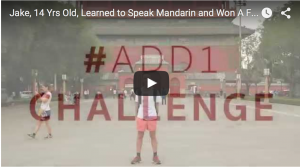 Add1 is a community of language learners committed to holding a 15 min conversation with a native speaker in 90 days. Instead of learning alone, Add1 challengers work together to stay motivated, share their struggles and victories, hold each other accountable, and get breakthrough results together.
Add1 is a community of language learners committed to holding a 15 min conversation with a native speaker in 90 days. Instead of learning alone, Add1 challengers work together to stay motivated, share their struggles and victories, hold each other accountable, and get breakthrough results together.Brian Kwong, founder of the #Add1Challenge, has graciously offered to give FI3M readers 50% off entry in the upcoming challenge . Spots are limited and application closes on November 30th.
FYI, Brian has warned me that this discount won’t ever be offered again, so jump on it!
Join Add1Challenge here.
Mimic Method - Accent Training for Six Languages:
Up to 90% Off

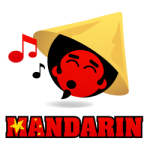


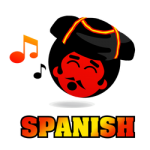
I’ve met Idahosa, the genius behind Mimic Method, and I’m wowed by his accent skills.
Mimic Method takes you through the component sounds of a language: the rhythm, the beat, the musicality and individual sounds, and how they all tie together. And it shows you exactly what steps to take to develop a more authentic accent. Mimic Method teaches you to tune your ear, then to tune your tongue, to the sounds of a language. I am currently using Mimic Method to help with my Chinese tones. Here are the deals:
Mimic Method’s full courses for French, Spanish, English, Mandarin, and Portuguese are all 50% off this weekend.

The German 7 day course is 65% off this weekend - learn to perfectly pronounce all 56 fundamental German sounds (consonants, vowels and diphthongs) in a week.
Glossika - the Mass Sentence Method: 30% off for Mandarin, Russian, and 30+ Other Languages

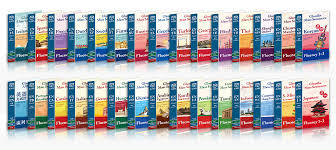
Mike (a.k.a. Glossika on Youtube) is a fellow polyglot best known on YouTube for speaking Mandarin and sounding exactly like he was born and raised in Taiwan, even though he’s a westerner. He heads this very clever series of language courses, designed to help you intensively learn a language to fluency in 3 months.
I’ve gotten tons of requests for Glossika discounts, so I’m happy to deliver! Glossika’s huge collection (with over 30 languages to choose from!) is now on sale at 30% off only this weekend
Pick up Glossika at 30% discount here.
To get the discount, you must use the coupon code fi3mnov2015 at checkout.
Italki - Language Lessons Online: Buy 100 Credits Get 100 Credits Free (for New and Existing Users)
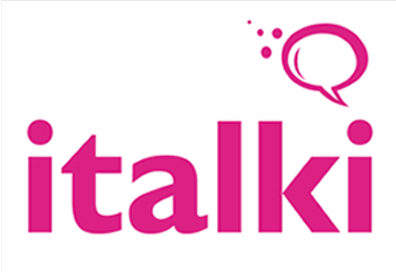
Italki is hands down my favourite language learning tool. You can use this site to get very cheap one-on-one lessons in your target language. This is the main way I’ve been able to learn so many languages, no matter where I am in the world.
If you’ve never signed up for italki before, now is the time! This weekend, when you create an account you’ll receive an extra 100 ITC (italki credits, approximately USD$10) immediately after your first purchase of 100 ITC or more. Combined, that’s enough for up to four one-on-one Skype lessons with a native speaker! Sign up here.
If you already have an italki account, you’re also in luck - click on this link to receive your own voucher of 100 ITC. After you’ve filled out the form, if you make a purchase of new ITC before December 4th, 100 ITC will be added to your account shortly after :)
HelloTalk - Text and Video Chat App for 100+ Languages: 6 Months Free Premium Access
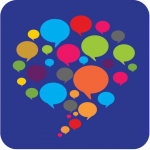
Chat through voice and text, with people all over the world, in one of 100 languages. That’s HelloTalk in a nutshell.
There are over one million language learners using this app. You can chat with natives, get corrections, and use Whatsapp-style features to share multimedia with your language exchange partner.
The app is completely free, but if you create an account this weekend and message the code FI3M to the HelloTalk team, you’ll get six months free access to the very cool normally-paid features of the app, like translation, voice recognition, and transliteration.
Skritter – Chinese and Japanese Character Learning App: 33% Off
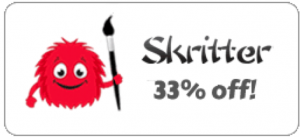
An essential app for Chinese and Japanese learners, available on both Android and iPhone. You’ll learn to recognize and write Chinese Hanzi traditional and simplified as well as Japanese Kanji in a gorgeous interface.
This is a great tool that makes you feel like you’re holding a magic wand as you practice characters. Anyone who signs up this weekend will get Skritter at 33% off with the coupon code XINGQIWU (Chinese for “Friday”), after a free weeklong trial.
Master Japanese & Master Mandarin - Epic Guides for Language Learners: 50% Off
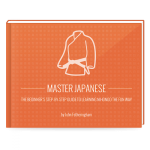
I’ve written some of my own language guides, but I have no plans to write one for Japanese, because there’s no way I could write anything better than John Fotheringham’s Master Japanese.
Yes, it’s that good. John is a hard-core Japanese learner, and you can feel that in every page of Master Japanese. His guide is written as a “a navigation system for independent learners”, packed with actionable advice, and it’s a lot of fun to read. And this weekend, Master Japanese is 50% off when you use the discount code fi3mfriday.
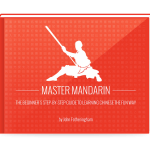
John’s brand new guide for Mandarin learners, Master Mandarin, is another gem that cuts through the piles of Chinese-learning resources on the Internet, and tells you straight which you need and how to use them.
If you’ve wished for just one place to go for all the best info on learning Chinese Mandarin, this is it. Snatch up Master Mandarin for 50% off this weekend when you use the discount code fi3mfriday.
FlashSticks -Colour-coded Flashcards with App Integration:
20% off - Available for French, German, Spanish, Italian, Beginner + Intermediate
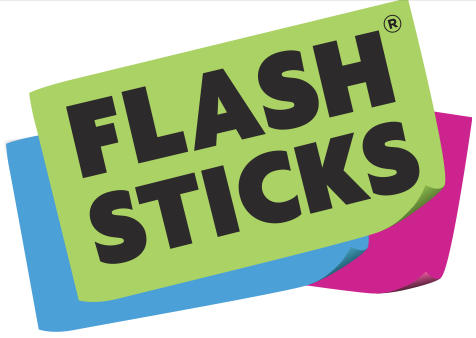
FlashSticks are colour-coded flashcards so you can remember noun genders or distinguish verbs/adjectives and other types of words. Plus, FlashSticks function both as flashcards and as post-it notes that you can attach them to objects around your house to give you more opportunities to boost your vocabulary.
I love how FlashSticks integrate digital and physical technology.Load up the app, point your phone at a flashcard and you’ll hear instant native pronunciation (augmented reality style!). The flashcards come in boxed-sets to keep you organised.
Readers of Fluent in 3 Months can get 20% off any pack or boxset of FlashSticks this weekend with the coupon code BENNYFRIDAY20. Make sure to apply the code at check-out.
Leicht Deutsch Lernen - Learn German through Reading and Stories: 50% Off
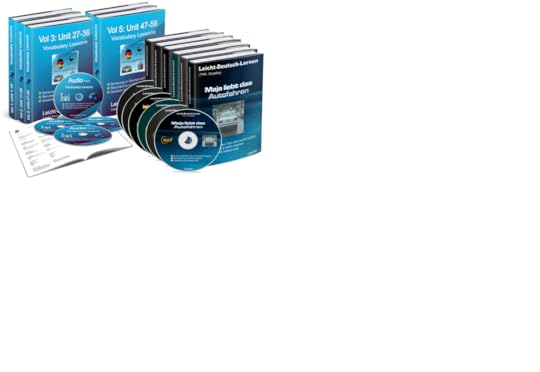
This is a hilarious learning system that focuses on teaching spoken German, using a TPRS approach (Teaching Proficiency through Reading and Storytelling). Basically, learn German through fun stories!
Bálint, the site manager here at Fluent in 3 Months, just passed his C1 exam in German - and he swears by this system (despite its dated sales page)!
Add this to your German-learning tool belt for 50% off this weekend.
90-Day Korean - Have a Conversation in Korean in 3 Months: 71% off

90 Day Korean is a multiple layer course that starts with teaching you to read Korean in 90 minutes or less, and moves on to a web-based course that guarantees you’ll be able to have a conversation lasting several minutes with a native Korean speaker within 90 days.
It’s packed full of learning material, and a weekly plan of action spaced out and emailed to you to help you keep up your pace. There’s also a personal coach to answer all of your questions along the way.
This weekend it’s available for a spectacular discount of 71% off the 9-month course! Check it out here.
Talk in Arabic - Podcast Covering 8 Arabic Dialects: 37% off
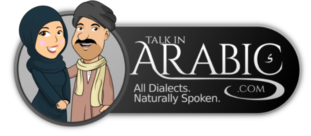
Despite Arabic being one of the most widely spoken languages in the world, it’s surprisingly hard to find useful Arabic materials if you want to genuinely speak with people. Arabic courses seem to be based around Modern Standard Arabic (nobody in the street ever speak this).
That’s why it’s a breath of fresh air to see this system focused on helping you speak Arabic whether you're learning the Egyptian, Levantine, Iraqi, Saudi, Tunisian, Sudanese, Moroccan, or Algerian dialect.
It features native Arabic recordings, transcripts so you can follow along, subtitles on the videos, online and offline options, and regularly updated brand new content every week.
The creator of the course, Donovan, has offered us 37% off for Black Friday. Check it out here.
Unlimited Spanish - Audio Course with Simulated Conversations : 40% Off
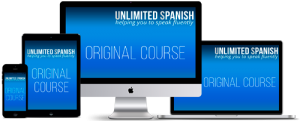
Unlimited Spanish is an audio course where native speaker Òscar simulates conversations, with cues for you to interact with him. It is among the best I’ve seen for simulating a real conversation from pre-recorded audio. And for those of you who are also visual learners, you’ll be able to read along through transcripts of the audio.
You can get Unlimited Spanish for 40% off this weekend.
English-Learning Power Pack: 75% Off

Learning English? Get this absolutely amazing mega deal: 7 English language courses sold together at a huge reduction of over 75% off. The pack includes:
Fluency with Friends (a course based on the hit TV show “Friends”)
100 most common phrases audiobook,
15 Minutes to Fluency ebook
Everyday English speaking course
Visual Guide to Phrasal Verbs
Success with Stories
Shadowing Stories
Snatch it up before the sale is over!
And Don’t Forget…
Fluent in 3 Months Premium is available at $47 this weekend only - to celebrate the launch of Premium 2.0 (usual price $97)!
Get your copy of Premium 2.0 here.
Which of these language goodies do you think you’ll be getting? Please share your favorites in the comments.
I hope you enjoy these language learning special offers - happy language learning!
The post Sale: Black Friday Mega-Deals for Language Learners! appeared first on Fluent in 3 months - Language Hacking and Travel Tips.





November 25, 2015
Meet Premium 2.0 – Here’s Why It’s Your Best Guide to Language Learning

And I’m THRILLED, ECSTATIC and OVER-THE-MOON excited to tell you that my team and I have finally finished this labour of love.
There is now a totally re-designed, shiny, brand new Fluent in 3 Months Premium.
We’re calling Premium 2.0
But you shouldn't buy it just yet.
We’re officially launching Premium 2.0 this Friday - Black Friday - at a huge discount. So keep an eye out for that announcement.
(And if you’re already a Premium member, you’ll get the upgrade for free as part of your lifetime membership!)
Today I want to tell you something a bit more personal. And explain why my team and I love the new Premium so much.
The Story Behind The New Premium
My job as the founder of this amazing community is to help you, and people all over the world learn languages faster, better, from anywhere in the world.
And I love my job.
But sometimes it’s tricky. Everyone wants to know pretty much the same thing:
What exactly should I be doing to learn a new language?
Where should I start?
How do I know what to study?
And yet, every person is different and learns differently. Some people are visual learners. Some people love to read, others hate it. So the answers to those questions aren’t quite the same for everyone.
The major constant for me in language learning, and you already know this, is that the best way to become fluent quickly is to speak from day one. Learn a few phrases, speak them. Learn a few more, speak them!
I have been encouraging my readers to do this for years, because I know that it works.

But which phrases should you learn? Where can you find them? What else should you be doing to learn?
The first words I should learn - “Hi, I’m Benny, a blogger from Ireland” - aren’t the same first words you should learn. And those phrases are not going to be in any phrasebook or course I’ve ever heard of.
That’s where it gets tricky: the answers to those questions are different for nearly every person. And yet everyone wants to know, What exactly should I be doing?
So my team and I needed to find a way to create a programme for language learners that:
tells you exactly what you should be doing to learn a new language…
even though we know full well that the ideal steps are slightly different for everyone.
This has been the delicate balance I have been searching for, for the better part of a year now.
Luckily, I work with a team of very smart people, who are all successful language hackers. Because they know the problems every language learner faces, they’ve worked with me to create a kick-ass programme that meets those problems head on.
Enter Premium 2.0.
We LOVE the result. We know you will too.
Here’s how we’ve changed Fluent in 3 Months Premium to be our ideal language learning programme.
You’ll learn the language of your choice in a step-by-step interface.
For the total beginner, Premium 2.0 offers a proven language learning pathway for learning any language. There’s a clear start point, and a clear end-point.
You’ll start off learning how to be a language learner (language hacker), which in my book is a more important skill to have than any gold-encrusted, promise-you-the-world language product, course or software could ever be.
Even the best courses can’t jump off of the page or the screen and make you fluent in a new language. You have to know what to do with the materials.
And helping people understand this, helping you learn to be a language hacker and not just a language learner, has been my life’s work.

This pathway is also optional - so if you’re a more experienced language learner, you can skip ahead.
You’ll be guided through learning your first few phrases.
Note that I didn’t say we tell you which phrases to learn.
How could anyone ever know which exact words and phrases that you, as a unique individual, are going to need to say first?
Premium helps you understand the types of words and phrases are worth your time to learn right now, so you get the biggest bang for your buck.
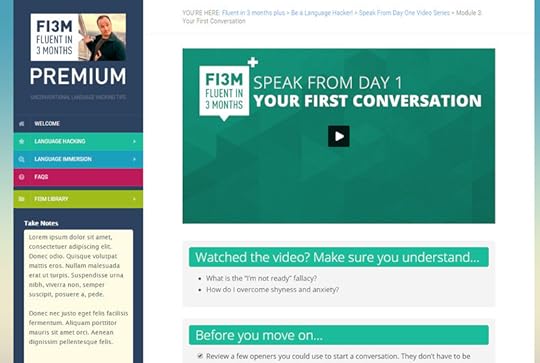
But the specific words you learn are always personal to you. This way, you’re not wasting time learning how to say “receptionist” in your first week, when you’d be much better off learning how to say “blogger from Ireland or “software developer” or “professional boxing champion”, whatever it may be!
You’ll always know what to do next
We’ve added specific tasks you should complete, with checkboxes you can tick off at the end of each section.
This way you have a clear idea of what your next step is, and you have the dreaded un-ticked box holding you accountable for actually doing it .
You can store your own custom text right inside Premium
We’ve added a very cool journaling feature that you can use to write notes or to write down the phrases you’re learning.
Since you don’t need to leave the program to write these down, it makes it easier for you to stick with the programme, and complete all the tasks.

You’ll build a customizable schedule to keep you on track for the long-term.
We’ve thought hard about how to create a programme that stays with you even when you’ve stepped away from your computer.
Premium 2.0 gives you clear direction for how to create a learning routine that works for the short term and the long term. Our Resources section now includes an example schedule for inspiration, a blank schedule that you can fill in, as well as lots of guidance for how to fill it in. There’s also curated list of our top recommendations for what types of resources you should include.

You’ll start with our top suggestions, but you’ll also integrate variety into your routine, so that you discover new approaches to learning that you never knew existed.
One thing hasn’t changed.
Even with all these extra features, the heart of Premium remains the same as always:
I believe strongly that no single course or book can bring a person to fluency. There’s no list of the exact words to learn or the exact resources to use, that works for everyone.
Premium is my answer to this problem.
It guides you in the types of phrases you should be learning, the types of learning activities you should be doing, the types of resources you should be using. It gives you all the information and guidance they need to do just that.
...But it also allows you (and helps you!) you to personalize the phrases you learn and the resources you use based on your life, interests, and learning style.
Premium 2.0 is your guide to becoming a completely independent language hacker.
I’d prefer you become the best language learner you could possibly be, than try to follow prescribed specific steps that really may not be ideal for you. Premium acts as that inspiration to get you on your best path.
We are launching the new Premium 2.0 at a crazy discount this Friday. So keep your eyes on your inbox until then, and I’ll tell you the moment it launches. I can’t wait!
The post Meet Premium 2.0 – Here’s Why It’s Your Best Guide to Language Learning appeared first on Fluent in 3 months - Language Hacking and Travel Tips.





November 24, 2015
How to Learn a Song in a Language You Don’t Know (And Why It’s the Best Thing You Can Do)

I don’t even know the name of my next door neighbour even though I see him every morning and I’ve asked him over ten times...
At this party recently I met a girl named “Leyla.” I found myself singing Eric Clapton’s song in my head. This lead me to forget everyone else’s name that night except hers.
Ever wondered why you can’t remember new vocabulary in your target language, but you still remember the lyrics to a childhood song from twenty years ago? Well, it’s easier to remember songs for many reasons.
I’m sure there are songs in your native language that helped you learn your mother tongue when you were a kid.
How can you use the power of music to your advantage in language learning? Learn a song in your target language. Here's how to do that.
1. Pick a Song in Your Target Language That You LOVE
It’s really important to choose a song that you enjoy - ideally a pop song.
Why? Otherwise you risk getting sick of it and losing motivation. Choosing a popular song is also beneficial as well, since it’ll be easier to find videos and translations online. Plus, we remember the songs we enjoy even more because those are the songs we listen to more often!
How do you find a song? Googling the top charts in the country that speaks your target language: “Top charts [country]”. Even better, write the search in your target language. Or, if you have a friend who speaks your target language, ask them. Check YouTube to make sure it has a lot of views and is popular (you’ll see why later on!).
If you want to challenge yourself, choose a fast rap song. If you’re more of a beginner, choose a simple song.
For example, if you are an English learner, the hardest type of songs would be Eminem rap song, and the easier ones would be something more along the lines of “Stand By Me.” by Ben E. King. If you can’t seem to find a simple song in your target language, don’t be shy to ask a friend or even ask the Fluent in 3 Months Facebook community.
2. Repeat, Repeat, Repeat!
Listen to the song on repeat until you start dreaming about it. Okay, maybe that’s a little much, but really, you need a lot of exposure.
Even if you feel like you’re not learning anything the 50th time you listen to it, you’re wrong. Your subconscious picks up a lot more than you think.
Think about the song “Macarena’ Or “Gangnam Style”? What percentage of those lyrics can you sing along to without thinking? Probably more than you realise.
Finding time to listen to this song shouldn’t be hard. Listen to it at the gym, in the car on your way to work, or even set it as your alarm clock.
Humans remember songs more than addresses, names, or definitions. Why? Songs stick in our head because of their rhythm and rhyme. Also, it’s easier to remember songs because putting them on repeat is enjoyable. Most people love listening to the their favourite songs over and over again. By contrast, read the same dictionary definition over and over again and you’ll quickly get bored.
At this stage, you know you’re ready to move on when you catch yourself humming the melody throughout the day.
3. Write Out the Lyrics by Hand
After you’ve listened to the song a couple of times and decided you like it, copy down the lyrics by hand. Writing it out by hand may seem old school and inefficient, but studies show that taking notes by hand helps you remember what you’re writing.
4. Write Out a Translation of the Lyrics
Every wonder why it’s hard to remember how to spell those random scientific terms you learned in chemistry class? It’s because it’s challenging to remember something that you don’t know. After all, if you don’t know what means, why would you care about remembering it?
This is the same reason it’s hard to remember foreign names such as Kweasibea (Ghana) Le Van Theo (Vietnam) or Menachem (Israel).
Translating the lyrics to your song gives it meaning and makes it easier to remember. Plus, you’ll pick up some useful vocabulary in your target language while you’re at it!
If you want to go the extra mile, before you use a dictionary, try to write a out summary of the lyrics. What’s the song about? Does it tell a story? Putting the lyrics in your own words will help you remember it better. True you may be able to find a version that’s translated for you already, but doing the translation yourself will help you learn the words more effectively. Remember, you get out what you put in. So taking short cuts here will only hurt you.
5. Memorise One Part of the Song at a Time
Now that you’ve translated the song, it’s time to start memorising the lyrics.
How do you do this without freaking out? Break it down into small chunks.
Don’t try to memorise the entire song at once. Instead, memorise a few lines at a time. Start with the easiest part, perhaps the chorus, bridge, or the most memorable lines.
This takes time, but don’t worry, once you learn it, it’ll stay in your memory for years.
Songs are usually formatted as follows, or something similar:
Verse 1
Chorus
Verse 2
Chorus
Bridge
Chorus
Outro
Most songs will have a similar format. Some may be simpler, consisting of just two verses and choruses.
If you absolutely don’t know where to start, start with the chorus. Then go back and memorise the rest of the song in order.
Assuming this isn’t your full time job and you’re not a professional musician, I recommend spending at least one week on each section of the song. That means one week on the chorus, one week on the bridge, and one week on each verse. This may sound like a lot of work, but it’s unlikely to take more than ten minutes per day. Little and often is the key!
Let’s take a look at a few hacks you can use to make this process easier...
Memory Hack 1: Let the Lyrics Come to You
Memorising the lyrics is probably the hardest step when you’re using songs in language learning.
But, you can make it easier on yourself by letting the lyrics come to you. My favourite strategy for this is to write out the lyrics and tape them on the wall in my bathroom. Every time I go to the bathroom, I’m forced to look at them.
Another hack is to take a picture of the lyrics and save this as your phone’s lock screen. How many times a day do you look at your phone? I know I check my phone way more than I’d like to admit!
[caption id="attachment_17202" align="aligncenter" width="576"]
 These are lyrics for a Vietnamese song that took me over a month to finally memorise. Also, you’ll notice my phone is in Vietnamese![/caption]
These are lyrics for a Vietnamese song that took me over a month to finally memorise. Also, you’ll notice my phone is in Vietnamese![/caption]Memory Hack 2: Recall
While learning the lyrics, don’t stare at the piece of paper and try to memorise what you see. Instead, practice recalling.
“Wait, isn’t that the same thing?”
Practice recall by trying to sing the song without looking at the lyrics you’ve written. That’s recalling. Another way you can practice this is by trying to write the lyrics out.
Memory Hack 3: Create Signposts
Another memory trick is to connect song lines to each other using signposts. The best way I’ve found to do this is by remembering the first or last word in each line and connecting them with a story.
For example, if one line ends in “tree” and the next line begins with “girl”. you can use “tree” and “girl” as signposts between the lines. To remember this, create an image in your mind of a girl sitting in a tree. Once you sing the lyric for “tree” you’ll be reminded of this image of the girl, and this will help you remember the next line.
6. Get Singing!
Once you’ve memorised your song, it’s time to practice. A great way to do this is by looking on YouTube for karaoke versions of the song. This is helpful because you’ll be able to read the lyrics as you sing the melody yourself. Practice out loud, just try not to wake the neighbours!
If this is too easy for you, then skip to the next step, which is is finding an instrumental version of the song without lyrics. This will force you to recall the lyrics!
7. Make Lots of Mistakes
When I first started performing live music, I worried that I was going to mess up the lyrics and everyone would hate me for it. After over two years of performing, I realised no one cares or notices if I screw up lyrics, even if it’s from a popular song.
You’re not even performing this, so don’t worry about making mistakes. Sing what you can and if you sing in gibberish for certain parts, that’s okay. Have fun with it!
8. Revisit Your New Vocabulary
After you know the song and can sing it decently, go back and revisit your translation. What new words have you learned? It might be helpful to have a friend or your teacher point out the words that are the most practical.
You’ll be surprised at how many words you’ve learned! What’s more, your pronunciation for these words will be spot on since you’ve been training your mouth for the last few weeks.
9. Use Your Song to Make New Friends
In my experience traveling to over 20 countries, I’ve noticed there are certain levels of excitement when I meet someone who’s from a country that I’ve travelled to.
Level one: I tell them I’ve been to their home country and they’re happy and they smile. We talk about the food, the places to go, etc.
Level two: I say a short greeting or phrase in their native language and they laugh and are impressed almost immediately. This leads to a conversation about why I speak the language and they usually open up.
Level three: On top of level one or two, I mention a cultural reference such as a TV show or a movie. They’re almost always impressed and happy that someone appreciates their culture.
Level four: Sing a song in their language. This instantly blows their mind and I establish a connection straight away. One time after doing this, I got invited to dinner at stranger’s homes after two minutes of meeting them.
Conclusion: The Benefits of Singing in Your Target Language
When it’s all said and done, learning a song in your target language will improve your pronunciation, enhance your memory, as well as add several new words to your vocabulary.
The best part? You can now SING in a foreign language. How cool is that!?
What’s your favourite song in your target language? Let us know in the comments.
The post How to Learn a Song in a Language You Don’t Know (And Why It’s the Best Thing You Can Do) appeared first on Fluent in 3 months - Language Hacking and Travel Tips.





November 20, 2015
Pocket to Kindle: How to Instantly Transfer Web Articles to Your Kindle (in One Click)

The Kindle doesn’t have to mean reading books. I’m currently learning German (and Chinese) and I don’t always want to read German novels. Often, quick-to-read articles that interest me are more to my taste. Plus, the Kindle allows me to highlight interesting passages to help with my language learning.
So, What’s the Problem with the Kindle as a Language Learning Tool?
When I find a German article online that I want to read later, I need it to transfer instantly to my Kindle and have it ready in a searchable database for later reference. It’s surprisingly difficult to do this.
Tools such as Pocket allow you to save articles instantly for reading later. But the standard set-up only works with tablets, smartphones and computers. Pocket isn’t automatically set up for Kindle reading.
There are other tools such as Instapaper and Readability that let you transfer articles to a Kindle to read later. But they only send the articles to your Kindle once a day, not instantly. Plus, they “batch” articles into mini-ebooks, which makes the articles really tricky to find. When I’m interested in an article, I want to be able to find it quickly and read it right away. Amazon has its own plugin but it sucks on all levels (wrong formatting, chopping articles in half, annoying user experience, my article database is not searchable, etc.)
That’s why I needed to find another solution...
The truth is, I’m a lazy person, always trying to find a simpler way to do anything. I wanted to create a one-button knowledge management system that:
Saves articles to a searchable database to read later and, if need be, refer back to it later
Transfers articles to read on my Kindle, instantly. Reading on my Kindle is easy on the eye. Plus, the Kindle’s built in dictionaries are really helpful when I come across I word I don’t know.
Makes it easy to find articles I want to read.
Here’s what I came up with:
The Simple Pocket-to-Kindle Process I Wanted to Create
Note: This process works for articles in any language, not just German articles.
To get articles onto my Kindle, I needed to integrate two systems:
Pocket, the popular “save it for later reading” web application. It’s free, very flexible, heavily supported, and very popular. Even more important, it has an API, so you can teach it to work with new devices such as the Kindle.
The Amazon Kindle. The Kindle does have a web browser plugin that can send articles immediately to your Kindle device. However, it’s very buggy. A lot of articles don’t appear properly, and the saved article history is far from being convenient to search and manage.
My task was to merge these two systems. My ideal scenario looked like this:
Come across an article I like (maybe on Facebook).
Hit the Save to Pocket browser button.
Open the article on my Kindle for immediate reading.
As it turned out, the system I created had an extra step:
Find an interesting article.
Click the Pocket button in Chrome to send it to Pocket.
The article is then automatically sent to FiveFilters (I’ll explain how later). FiveFilters immediately converts the article to Kindle format and sends it to my Kindle.
My Kindle automatically downloads the article within 15 minutes, so I can read it whenever I want to.
A big bonus of this process is that all articles are saved in my Pocket archive forever. If I remember an article I read that I want to read again, I can go back to getpocket.com and do a quick search to pull up the article.
How to Read Web Articles On Your Kindle
Step 1: Create a Pocket Account
Head to getpocket.com and register a free account. Then download the Pocket browser plugin. I use the Chrome version. Pocket is also available for Firefox, and it’s built-in in the newest version of Firefox. With Internet Explorer, you can use the bookmark option to save articles into Pocket.
Step 2: Create a Gmail Account
If you don’t yet have a Gmail account (where have you been?), set one up here.
Step 3: Create an Amazon Kindle Account
If you have a Kindle device, you’ll also have an Amazon account. In your web browser, log into your Amazon account, then go to the Device Manager menu. Here, you’ll find your Kindle specific email address. If you send a document to this email address, it will be delivered to your Kindle.
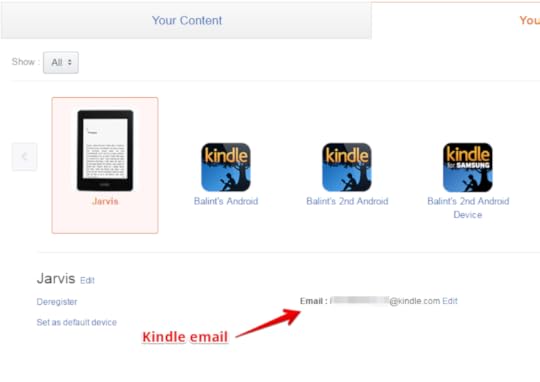
Usually this email address is like this: yoursurnameyourfirstname_number@kindle.com So for the sake of example, let’s say it’s johndoe_66@kindle.com
Now go to the Settings menu and add your Gmail address to the “Approved Personal Document E-mail list). This is needed, so that only you can send documents to your Kindle device.

Step 4: Set Up Five Filters
This is where it gets interesting. Open Gmail and send a new email to your Kindle email address. However, after the “@” symbol don’t write “@kindle.com” but “@pushtokindle.com”. in the body of the email, include a link to an article.
In practice, it works like this: open your email, and send an email to johndoe_66@pushtokindle.com (of course, use your own name and number, not johndoe_66) and put a link in the email body. Here’s a good article to get you started: http://www.fluentin3months.com/mistakes-matter/.
Sending this email automatically signs you up for a FiveFilters account. They’ll send you an email reply to confirm your sign up. Open the FiveFilters email and click on the link to activate your account.
You can use FiveFilters 25 times free of charge. After that, it’s $12 every six months. That’s a bargain if you do a lot of reading!
Here’s a video that explains how to set up a Five Filters account:
https://www.youtube.com/watch?v=u1asT...
Step 5: Connect Pocket and Five Filters
Believe it or not, the most difficult part of this process is complete. All you need to do now is connect Pocket and Five Filters.
To do this, you’ll need to sign up for If This Then That (IFTTT).
Go to ifttt.com and register a free account then open this pre-made recipe. Don’t be put off that it’s not in English.
Here’s how to do it. You only need to complete the “To address” section, as shown below:

You will be asked to give IFTTT permission to connect to your Pocket account and your Gmail account. Once you’ve done that, you’re ready to go!
Step 6: Start Adding Articles to Your Kindle
You’re ready to start adding articles to your Kindle!
Here’s how it works. Let’s say I’m browsing Deutsche Welle and I come across this article. I hit the Pocket button in my browser (or alternatively I can just hit Ctrl+Shift+S on the keyboard for a quick shortcut):

Then I open my Kindle and I see this:

Note: you might need to wait a couple of minutes to have the article on your device, because IFTTT runs every 5-15 mins, plus FiveFilters needs a little time to format the article.
Conclusion: Pocket to Kindle Helps You Read More
I’ve read a lot more German articles since I set up this system, and it’s been a huge help to my German learning. I’m sure you’ll find that with this system you’ll also read more.
Go set up the system now, and for $2 a month you’ll be able to read anything you want on your Kindle.
What will you be reading on your Kindle using the Pocket to Kindle system? Let us know in the comments.
The post Pocket to Kindle: How to Instantly Transfer Web Articles to Your Kindle (in One Click) appeared first on Fluent in 3 months - Language Hacking and Travel Tips.





November 13, 2015
20 Resources for Beginners’ German Reading Practice

Anyone wanting to become fluent in German should be continually looking for methods to build three key skills – listening, speaking and reading. There are endless ways and opportunities to enhance these skills, with many resources available online.
Watching German movies will help you hone your listening skills. You can improve your spoken German by having conversations with native speakers by any means necessary.
As far as reading goes, there are many methods available for use, to build upon your vocabulary and learn German fast. From novels, to plays, non-fiction texts and children’s stories, there is something for anyone, no matter what their learning level or interests.
German Newspapers and Magazines
Newspapers can be easily accessed online, often without a subscription. They offer an insight into the political climate, current affairs, sport and culture. They’re also written in Standard German, making them accessible even for those at the early stages of learning German.
German News in Simple Language
Nachrictenleicht , or “News Easily” is a website that aims to make news uncomplicated. Every week they publish articles about world politics, sport and human-interest stories, in simple language. They omit long, difficult words, embrace shorter sentence structure and are largely concerned with presenting information as plainly as possible.
This service is designed for people with language difficulties, making it ideal for anyone wanting to learn German online. You can build upon your knowledge of current affairs within Germany and expand on your knowledge of the language, at a level that’s suitable for beginners.
Germany’s Most Widely Circulated Magazine
Der Spiegel is a German weekly news magazine, with a circulation of more than one million. Likened to Time, it is known across German-speaking countries for its investigative journalism and is cited as being one of Central Europe’s most influential magazines. It’s for intermediate to advanced learners, and will give you exposure to high level German language. If you are unable to gain access to a hard copy print of the magazine, check out the articles featured on Spiegel.de.
News for Younger Readers
Neon targets a younger audience, using an aesthetically pleasing spread and covering topics ranging from cultural issues, to band write ups.
You’ll even find a section entitled Useless Knowledge, which contains random gems of information. For example, German language learners who also own bars will be delighted to discover that “Guests in a premises where the music is 88 decibels loud drink more than guests at a bar with 72 decibels.” Get that music pumping!
Online German Dictionaries and Encyclopaedias
It never hurts to have a dictionary on hand when learning a language, whether in hard copy, or online. The following resources may help in adding to your vocab list or deciphering the meaning of unfamiliar words or phrases.
German Wikipedia
In case you didn’t know, the world’s most famous online encyclopaedia is available in German. Navigate to the German version to read articles on just about anything you fancy! Although most information found on Wikipedia should be taken with a grain of salt, it still makes for good German reading practice. Also make sure to click “Deutsch” on the left navigation if you find yourself reading an article in English!
Hurraki
Hurraki is an German online dictionary that works in a similar vein to Wikipedia, with an emphasis on plain language. It is an online community where people are able to add and edit articles in simple German. The website is designed to be easy to reference and read.
German Novels
A brilliant way to get German reading practice is to re-read books you have already read in your native language. By picking books that are already familiar to you, you may find it easier to translate the stories and keep in the loop with what is going on.
If you grew up devoted to the Harry Potter series and devoured the books in your youth, why not try reading them in German? You can pick up the German versions by searching for Harry Potter German Edition on Amazon.com. As the story will be familiar to you, you will find it easier to translate what it is you are reading. Of course, it doesn’t have to be Harry Potter - any English book whose story you have committed to memory will make for perfect German reading practice.
If you wish to delve deeper into the world of German culture, take up the challenge of reading novels written by German speaking authors. Franz Kafka was a famous novelist of the 20th century, publishing both books and short stories . Die Verwandlung or The Metamorphosis is one of his most celebrated novels, that can be purchased in a dual-language format.
Siddartha is a story by Hermann Hesse, similar to the book The Alchemist with its theme of self-discovery and written in a style that is simple and lyrical. It too can be bought online as a dual-language book, making it ideal for intermediate learners.
Cornelia Funke has been referred to as Germany’s version of J.K. Rowling, penning fantasy tales for young adults. Tintenherz or Inkheart is the first book of a trilogy about a young girl and her father, who have the ability to bring characters to life by reading a story aloud. Chaos ensues!
German Short Stories
If the idea of reading an entire novel in a foreign language is a bit too overwhelming for you at this point in your language education, consider reading short stories instead.
Germany Through the Eyes of a Newcomer
Café in Berlin is a collection of ten short stories, which follow the life of a young man from Sicily who has just moved to Berlin. It explores the daily life in the German capital, offering insights about the country and people from a foreign perspective.
The text is targeted at beginners and aims to help language learners build upon their knowledge of isolated words and phrases, to understanding how these can be worked into sentences.
Essays Covering Life in Berlin
Wladimir Kaminer is a Russian-born German short story writer. After emigrating to Berlin in 1990, Kaminer immersed himself in the city’s art and literature scenes.
Although Russian is his first language, his entire literary output is in German. In describing what it is he writes about, Kaminer claims to make notes about the world, the past, present and future, social reality and life observed through the eyes of a migrant.
His first book Russian Disco , is a series of short, autobiographical essays about life in Berlin just after the fall of the Berlin Wall. Use this book as a resource for German reading practice, as well as a direct account of what life was like during one of the most exciting and rapidly changing times in modern German history.
German Children’s Stories
If reading a novel or a short story for adults seems too advanced at this stage in your learning, consider using children’s books instead. They’re more likely to use simple words and sentences, making them easy to understand. And illustrations can help you get to grips with what’s going on even if you don’t understand every word.
The Brother’s Grimm
Jacob and Wilhelm Grimm were German academics who collected and published folktales during the 19th century. Their stories, which include the likes of Aschenputtel (Cinderella), Dornröschen (Sleeping Beauty) and Hänsel und Gretel (Hansel and Gretel), have been turned into films by Walt Disney and, more darkly, were used as propaganda by the Third Reich. The Grimm Brother’s original stories are still popular at bedtime – the words of watered down versions of the tales, told to children by parents world over with the hopes of carrying them off to sleep!
The Grimm Brother’s folk stories are tales many of you would have grown up both reading and having read to you. This makes them an excellent resource for building upon your reading skills in German.
As the original stories are no longer copyrighted, there are resources available online which feature dual language versions of stories such as Little Red Riding Hood . Take this opportunity to give yourself a German language lesson! Read the text in German, while referring to the English translation. One you are across the German text, try taking a short quiz to test your knowledge.
Max and Moritz
Lesser known in the English-speaking world is the children’s book, Max and Moritz (A Story of Seven Boyish Pranks), originally titled Max und Moritz – Eine Bubengeschichte in sieben Streichen. Written and illustrated by Wilhelm Busch and published in 1865, it is a humorous tale told in rhyming couplets. The book is well known and adored across German-speaking countries and remains a popular choice for bedtime stories for not yet literate children.
The book covers seven pranks that Max and Moritz - tormentors and troublemakers - play on their unsuspecting family members, teachers and acquaintances. As this text is also available within the public domain, the original German version and English translated text can be found online. You have the option of reading each trick in German, English or you can refer to the dual language option. Continue to test your German language knowledge with a series of quizzes on the text.
German-English Poems and Plays
Once you’ve reached a more advanced level of learning, you can look to German poems and plays to build your German skills.
Dual language books are a helpful resource in this regard. You can read them as a standalone text, while having the English version readily available for when you come across words or phrases you don’t fully understand.
If you have an interest in poetry, start with a dual-language book that features the poems of many renowned German poets, alongside the English translations.
For those looking to get more specific try reading the works of Johann Wolfgang von Goethe. His poems have been translated and appear in dual language books. Fun fact – the Goethe Instutit, an operation that promotes the study of the German language abroad, is named after him!
Der Besuch Der Alten Dame (The Visit of the Old Lady) is a tragicomedy written by Friedrich Dürrenmatt. The play is about a wealthy woman who returns to her former hometown seeking vengeance. She wants the townspeople to rally together to kill the man who abandoned her, in exchange for money.
The printed version of this play features the full German text on one page, accompanied by the English translation and notes on the next page. The book also has an extended vocabulary at the back and a detailed introduction in English, explaining the social and historical context of the piece.
Over to You
As you can see, there are many resources you can use to build upon your German reading skills, no matter what your level of learning or personal interests.
If there are any books, short stories, or online websites that you’ve found to be helpful, please do not hesitate to share them in the comments!
The post 20 Resources for Beginners’ German Reading Practice appeared first on Fluent in 3 months - Language Hacking and Travel Tips.





November 10, 2015
Nahuatl: How I Learned a Language With Few Native Speakers

In 2014 I decided to study Nahuatl, an endangered language from Mexico. When I decided to do this, it seemed like a great idea. But only for a moment… until I realised how much work it was going to be. A seemingly innocent and well meaning decision began to feel like the beginnings of a permanent headache...
I was diving in, full speed, towards a language with few speakers (and therefore, fewer people who teach it), even less fellow learners and EVEN less learning resources. If you've learnt another language before embarking in this daunting task, you'll know these are precisely the things whose existence you appreciate when learning any language!
Studying a language with very few speakers sounds like something people in their right mind don't do. However, if you know how to do it, it can become an incredibly rewarding activity, as well as your tiny contribution towards keeping a weakening language alive.
Believe me, I'd know. Learning Nahuatl was all I'm telling you and more...
Wait, Wait. What's Nahuatl?
I thought you may ask! You know those people everybody (somewhat mistakenly) calls the Aztecs? Well, their actual name was the Mexica (not that you care, but they were called Aztecs before founding Mexico—after that point, they became known as Mexica).
Now, the Mexica were my country's first founders, and this beautiful language called Nahuatl was their main language and lingua franca when Mexico was an large, undiscovered empire. If you're interested in knowing more, there's lots to be read on the subject.
I started learning Nahuatl for several reasons. The most important was that my best friend speaks it quite well and his hard work inspired me to start learning it. Equally, I felt sadness and embarrassment at not knowing even the tiniest bit of the language that is essentially the foundation of my national culture and identity. I'd been looking outside my own country for so long that I'd forgotten what was inside it.
In spite of Nahuatl being 100% a Mexican language and me currently residing in Mexico, finding resources and teachers with whom to learn this language, even within my country, was actually really hard. Although Nahuatl has a bit over a million speakers, in urban settings Spanish is favored and preferred, and since native speakers are often discriminated if they don't speak Spanish, they don't speak it much if they live in the city. Thanks to this, the descendants of natives are losing the language bit by bit, which means that teachers are far and few between. To make things more difficult, due to the nature of my work I usually study on my own and then use italki and language meet-ups for speaking practice. To my chagrin, I realized very early on these wouldn't be available to me!
What had I left to do... except hack my way through this language?
How to Go About Learning the Unlearnable
It took me a while to find a way to work around the little (but at the time, seemingly insurmountable) issues I had found in the early stages of learning Nahuatl. As a matter of fact, the first few weeks after deciding to start learning Nahuatl were pure, venomous frustration because I couldn't study this language the way I wanted. Keep in mind that until that point, I was very used to following a rigid progression that went a little like this:
Gathering resources (textbooks, dictionaries, websites)
Studying the basics on my own for about a month, then hiring a tutor through Italki for early conversational practice
Continued tutoring mixed with listening to and reading native media and literature.
Since steps 1 and 2 were essentially unavailable (step 3 isn't: media and literature in Nahuatl do exist), I realized I'd have to carve out a new step one for myself. This is how I came to realize that minor languages aren't impossible to learn (not even on one's own)—they just need more preliminary work.
Here’s what worked for me.
Become the Indiana Jones of Languages
Start out by doing a little detective work. Consider the global position of the language you want to learn, and investigate a little. Where is it still being spoken? Is it in danger? Being protected by one particular organisation or committee? Is there an expert on the matter? Is there any really old material written about it? Where was it printed? Are the natives known to have emigrated? Where? Don't be afraid to ask around, even to people you think may know nothing about the subject. One of my best clues came from a family friend who knew close to zero about Nahuatl, but had seen a sign for an editorial house dealing in Mexican languages close to her home.
Researching all about a target language with few speakers and learners might sound like a boring task, but it can get really interesting. It feels a bit like you're an Indiana Jones of languages, opening yourself a path to a place not many people know about. It's quite thrilling, actually!
In addition, the internet can be an incredible help in this regard.
Barring that terrible situation where your target language is the very one that no linguist or researcher has ever heard of, for the most part somebody will have done the hard work for you. Keep your antenna up and aim your periscope in the particular direction of colleges, universities and language research institutions. Unless the one person that can give you the valuable information you're looking for happens to be an absolute grinch, the people that spend their lives documenting and protecting these languages really enjoy knowing there's public interest in them.
Embrace Low-Tech Study
Language study has become incredibly easy with the advent of the internet and app-based learning. However, do you know the kind of time and money that goes into developing the kind of programs and systems that are truly global? They're usually not cheap to create, and oftentimes the groups and organisations keeping minor languages documented and alive do not have the resources or connections to open the language to a broader, internet-based audience.
If you're like me and enjoy learning over the internet, then count yourself absolutely lucky if you find a tutor who teaches a minor language online. If you don't, look into immigrant groups on the internet, as well as off it. With some luck, you might find a native of your target language willing to tutor you in it.
Libraries may lay slightly forgotten in today's just-Google-it mindset, but you'll find that they're very helpful in finding clues to where and how to study your language. If you don't know where to start, ask the librarian; their job is not only to place the books back in their place, you know?
Keep your expectations humble and realistic. Always remember that before the app-based dictionaries and online chat tools of our times, there were paper dictionaries and mail correspondence. Above all, be patient if you don't feel you're progressing as quickly as you're used to!
Get Your Backpack On - Go Travelling!
Whether your language is a minor one or the lingua franca of the world, travelling has always been one of the best ways to learn a language. However, in the case of minor languages, you really have to be willing to go into the unknown, to stay in towns that may not even appear in a travel guide, and to live an adventure that probably very few people will be able to relate to. Let me tell you a little about mine.
At some point during my Nahuatl mission, my best friend and I decided to visit Cuetzalan del Progreso, a small town built in the mountainous northern terrains of Puebla state, in Mexico. This is a place that's far removed from just about everything, and maybe thanks to this they've managed to preserve Nahuatl as an important secondary language—indeed, Nahuatl-Spanish bilingualism is very high in Cuetzalan (sadly, this is a very uncommon situation in Mexico).
Although I'd heard rumours about the degree to which Nahuatl is still used in this town, I only realised just how wonderfully bilingual Cuetzalan is when my friend had to draw some money from the local ATM. He came back apologising, saying that he had taken so long because two women had stood in front of the ATM for a short bit, while one taught the other how to use the machine in Nahuatl.
Because of my low degree of fluency then, I didn't get to converse much during this trip, but I did hear a lot of the language being spoken, and was able to better understand the culture on which the language is based. In fact, I believe I learnt more about Nahuatl during this short trip than during the five months I had been learning it before then. In an incredible stroke of luck, we were invited to a school where Nahuatl is taught from kindergarten, and where the children only start learning Spanish in first grade. As they're bilingual by grade two, learning English as a third language in middle school apparently doesn't come too hard to them. Although this is an experimental system, unrecognised by Mexico's education authorities, seeing this new generation of Mexicans actually speaking the language I‘d had so much trouble finding textbooks and teachers for gave me hope for the future.
Be Creative, Flexible and Above All Inquisitive
The truth is that in practice, learning a language with few speakers and resources isn't too different from learning any other language; it just requires better planning and more patience. I think there's also a major motivational component in learning these languages. By actually going through with learning a language with very few speakers, you're helping to keep them alive. "But I'm just one person", you say. Your contribution may feel like a drop of water falling into a drying lake, but that's still one more drop of water than the lake had before.
Never consider that the language you want to learn is unavailable or impossible to learn. You live in the same planet as another seven and a half billion people. Insist enough, and you'll find people who speak your target language (or at least, know of it), and who can direct you to places where it's spoken.
The post Nahuatl: How I Learned a Language With Few Native Speakers appeared first on Fluent in 3 months - Language Hacking and Travel Tips.








